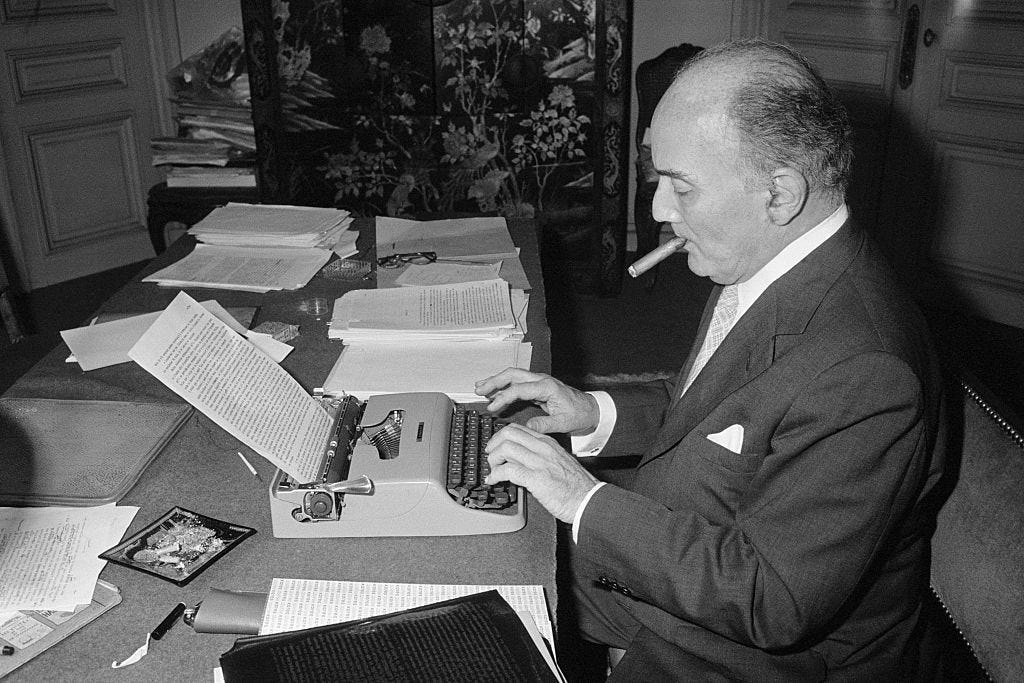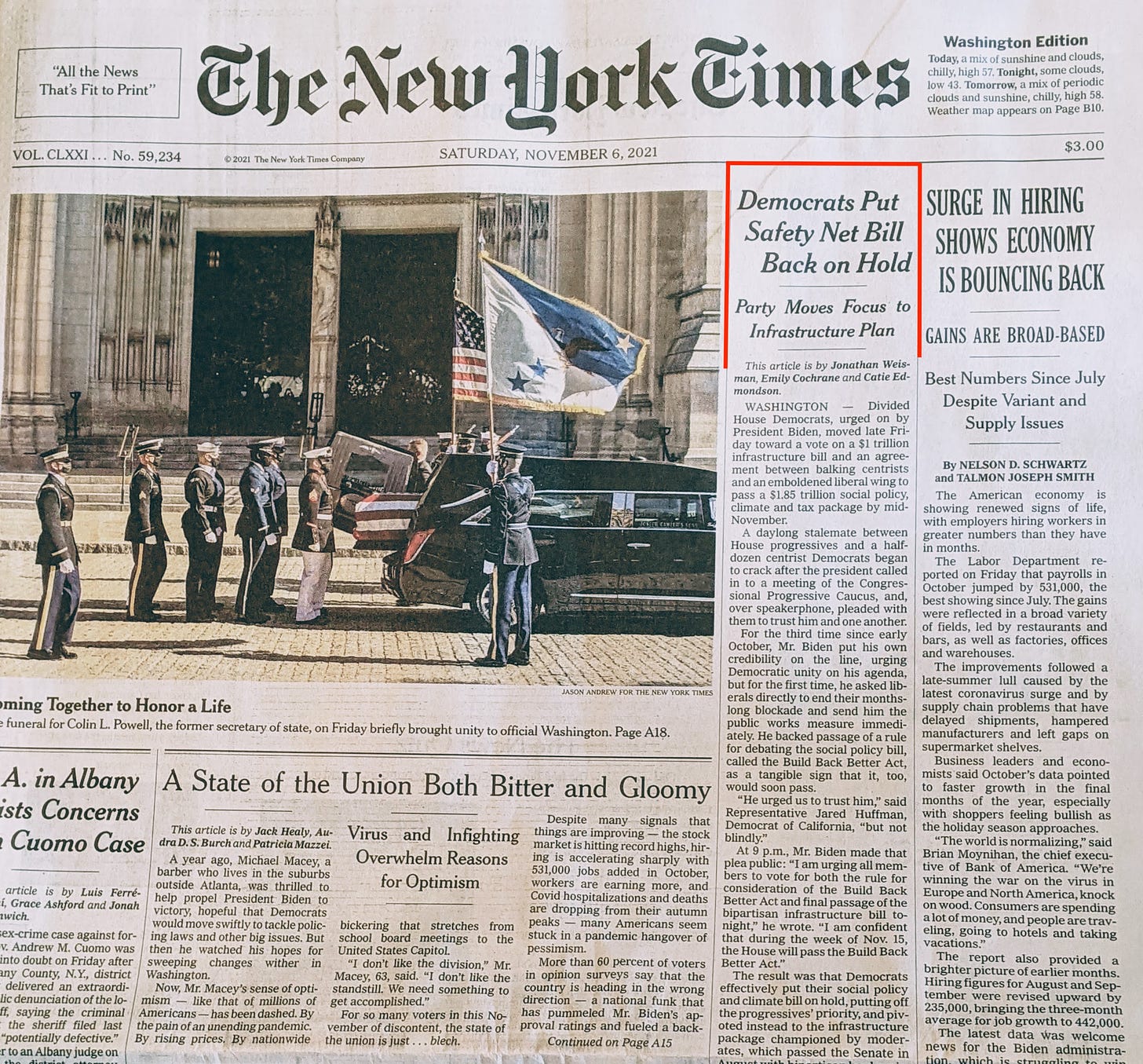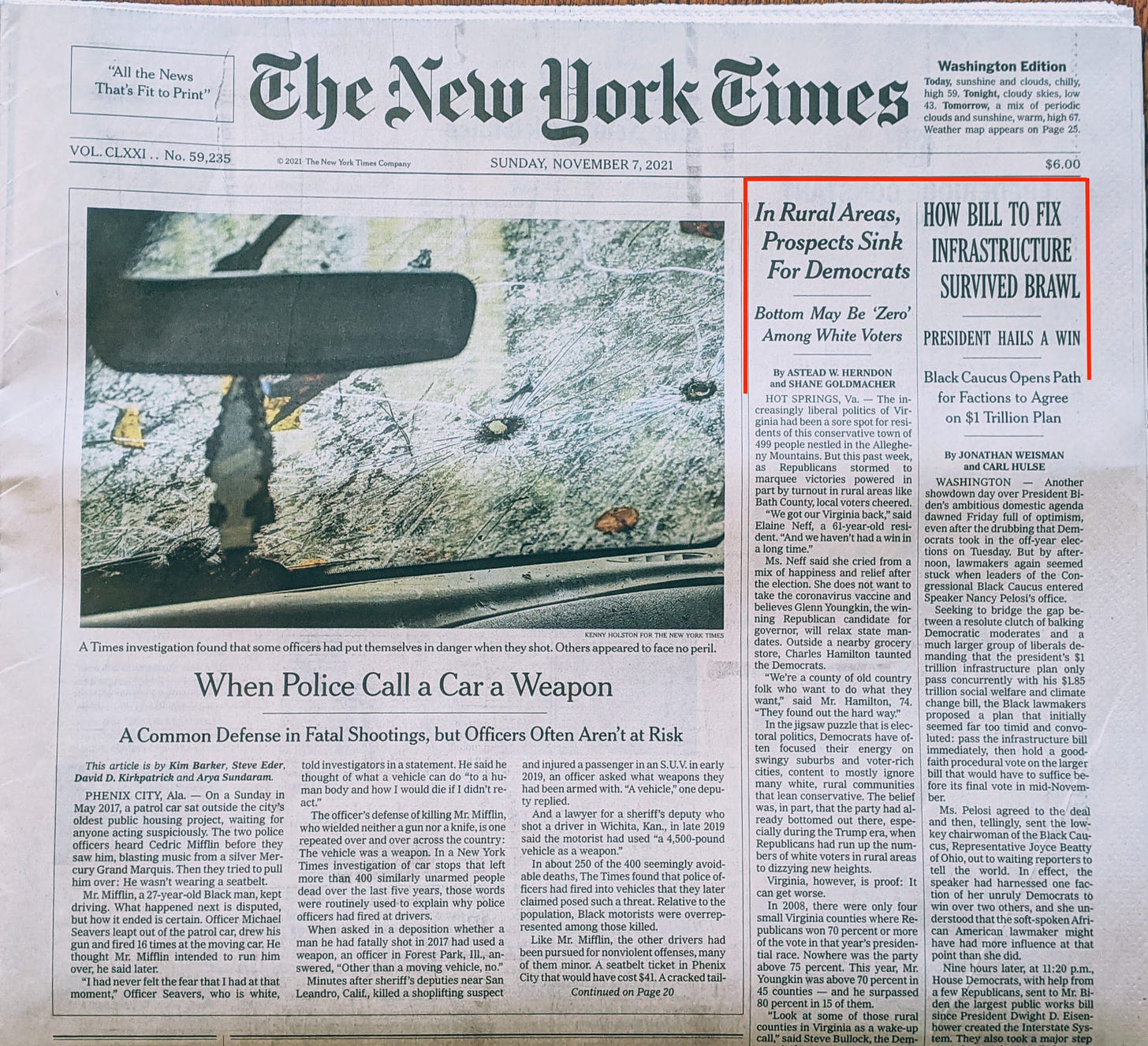‘Politics-as-Sports’: Why It Matters
Once you start noticing this "how-versus-what" pattern, you'll see it everywhere.

This post has a simple purpose. It is to clarify and illustrate an important point about journalism of this moment. Once you start noticing the pattern I’m talking about, I predict you’ll see it everywhere.
What exactly do we mean, when we talk about the problem of “horse-race” or “sports-page” coverage? I think it’s worth being specific about what it is and why it matters. As it happens, new vivid illustrations have just appeared.
First some background:
Time passes, and it stands still
Twenty-five years ago I wrote a book about journalism. Its title was the same as this site’s: Breaking the News. Both the title and the structure of that book were thanks to my wonderful Pantheon editor of those years, Linda Healey.
The book came out in an completely different era from our own. Apple and Microsoft existed, but the rest of today’s tech hierarchy was barely a gleam in the founders’ eyes. Mark Zuckerberg was 11 years old when I turned in the manuscript for my book. The founders of Google were in graduate school. Jeff Bezos was notching up the first sales from his fledgling Amazon online-bookstore company.
In the political-media realm, Roger Ailes was about to launch the Fox News Channel. Charles and Diana were still officially wed. Bill Clinton was in his first term as president, preparing for his re-election run. Indeed the “Essential Election Reading” promotional sticker you see on the hardback cover below was for the Clinton-Dole race of 1996. The anchors of the then-dominant evening network news programs were Tom Brokaw on NBC, Dan Rather on CBS, and Peter Jennings on ABC.
It was a different world.
But to my surprise, in looking back, one of the main points I made about the mainstream media of that lost-innocence era survives to this day. That point was the harm done by obsessive press emphasis on the how of politics—popularity, procedures, party feuds—as opposed to the what of government, and its role in people’s lives.
Here is a screenshot from the original-edition pages, followed by an easier-to-read transcription.
Here are the last few paragraphs on that page, with emphasis added:
The more prominent today's star journalists become, the more they are forced to give up the essence of real journalism, which is the search for information of use to the public…
The harm actually goes much further than that, to threaten the long-term health of our political system. Step by step, mainstream journalism has fallen into the habit of portraying public life in America as a race to the bottom, in which one group of conniving, insincere politicians ceaselessly tries to outmaneuver another.
The great problem for American democracy in the 1990s is that people barely trust elected leaders or the entire legislative system to accomplish anything of value. The politicians seem untrustworthy while they're running, and they disappoint even their supporters soon after they take office. By the time they leave office they're making excuses for what they couldn't do.
Deep forces in America's political, social, and economic structures account for most of the frustration of today's politics, but the media's attitudes have played a surprisingly important and destructive role. Issues that affect the collective interests of Americans—crime, health care, education, economic growth—are presented mainly as arenas in which politicians can fight.
The press is often referred to as the Fourth Branch of Government, which means that it should provide the information we need so as to make sense of public problems. But far from making it easier to cope with public challenges, the media often make it harder. By choosing to present public life as a contest among scheming political leaders, all of whom the public should view with suspicion, the news media help bring about that very result.
That is: the operational details of politics—the personalities, the dramas, the sausage-making, the grandeur—are part of what (we) political reporters love about our work. We love knowing how the game is played, and recognizing the parts of it that are a game. We love being able to say, “What’s really going on is…” Or “We’re now seeing a big problem for the mid-terms.” Or “this reminds me of …” Or “this is all kabuki.”
The passion for the multiple layers of the game that can make sports-talk radio so interesting, and that keep pre- and post-game sports “analyst” panels in business, is part of what draws us to these contests.
But that’s because we are political enthusiasts. Most people, most of the time, mostly care about other things. For book-length versions of these two preceding sentences, I direct you to Breaking the News and Our Towns.
The ‘how’ of politics, versus the ‘what’ of governance
Last month I gave an illustration of this difference, based on the questions that audience members asked of Joe Biden at a Town Hall in Baltimore, versus the normal traffic at a White House briefing or press conference.
The people at that Town Hall session, like most other people in most meetings with most candidates and officials, asked mainly about the what of government—education, vaccines, jobs, and so on. The press mainly asks the how of Biden’s dealing with critics and supporters.
Here are new illustrations from the past few days:
—Around midnight in Washington this past Friday night, the House of Representatives finally passed the long-debated major infrastructure bill. It was a rare illustration of the “bipartisan accord” whose absence pundits have so often bemoaned. In the end 13 Republican members of the House voted for the bill, and six Democrats voted against it. (Back in August, 19 Republican members of the Senate had voted for it. Infrastructure projects go everywhere.)
But the real importance was of course the bill’s contents. The next morning the New York Times had a long, prominent front-page piece about what had just happened. It’s the story marked in red.
Remarkably, the headline on the story was not about the bipartisan vote the previous evening, or what the resulting legislation would do. Rather it was about what Democrats had not done—namely, agree among their caucuses and the Republicans on the separate “Build Back Better” bill, which was now “back on hold.”
A major Democratic-backed bill passed with bipartisan support, and the nation’s leading newspaper framed it as a scramble backward for “Democrats.”
The roughly 40 paragraphs of the story that followed, from the front page to a long inside jump, were strictly about the politics, deal-making, factional maneuvers, and polling implications of the bill. The story’s only glancing mention of its contents was as follows:
“Passage of the infrastructure legislation would be a much-needed and long-delayed victory for Mr. Biden—and a welcome break for Democrats, who could spend next week’s Veterans Day break traveling to their districts to show off the roads, bridges, tunnels, transit lines and airports due for a huge infusion of federal support.”
That is: roads, bridges, tunnels, airports, and so forth were significant mainly as near-term talking points. This would be the appropriate framing if you were a pollster or a Congressional staffer. Less so for anyone else.
A few hours later, the Times’s revised online version of the story had added some mentions of the bill’s contents. Which means, interestingly: under the previous night’s intense deadline pressure to make the print edition, the aspect the paper chose to stress was the how of party politics. When it had time later on, it got around to the what.
—The very next day, there was a similar illustration. The two national papers that showed up on our doorstep both led their Sunday morning front-page coverage with the infrastructure bill.
Here was the front page of the Washington Post:
“Across finish line,” in a banner across the front page. “$1.2 Trillion Bipartisan Achievement.” “After stinging setbacks, an enduring win to savor.” “Pillar of rebuilding agenda will be felt nationwide.”
The stories presented the vote as what it was, in the eyes of supporters and opponents alike: a significant moment in legislation and in national policy. The stories went into the politics of the vote but mainly talked about its potential effects. (In addition, the paper had an above-the-banner notice about the Post’s extraordinary “The Attack” report on the January 6 insurrection.)
The point about the Post’s presentation is not its framing of the episode as an “achievement” (rather than a setback) for Biden. It is that the stories, headlines, and presentation emphasized the what rather than just the how of the bill.
—For comparison, here was the front page of the New York Times that we got at home yesterday morning:
The lead story about the bill was a one-column explainer on how it had “survived [a] brawl.” Next to it, with paired emphasis, was a top-of-page story: “In Rural Areas, Prospects Sink for Democrats.” That one featured interviews with rural and Southern white people, including a woman who said she had been at the Capitol on January 6, on why they were against the Democrats. (In addition, the front page had a feature from the powerful Times investigation on the way routine traffic stops have been abused by local police.)
This was front-page framing of the infrastructure vote as being significant for its how, rather than its what.
Once you start noticing coverage in these two categories, you’ll be amazed at the abundance of how stories and TV commentary. Among the many reasons: if you’re an expert in politics, you can bring any development into your wheelhouse by talking about its implications for polling or the midterms. It’s what you’re interested in, and know about. If you only have a hammer …
This kind of coverage makes perfect sense on sports pages. We already know the what of the final score. What we care about is the how—the plans and moves that coaches, athletes, owners brought to the game. But, as I argued long ago, this concept presents public life as a version of sports—with less attractive contestants. Obviously there are dire other reasons for cynicism about public life. But this approach does not help.
And as for the ‘why’…
I will save for another time speculation on the why—why coverage of public life trends so strongly in this direction. That I was writing about this same pattern a quarter-century ago suggests that it has deep roots.
(People who have written extensively about this tendency and its current sources include Jay Rosen, Eric Boehlert, Margaret Sullivan, Dan Froomkin, Jennifer Rubin, Judd Legum, Jackie Calmes, Greg Sargent, and many others.)
And because both of my examples here are from the New York Times, I’ll say once again that I regard the paper and most of its news operation as a daily miracle of imaginative ambition, expertise, and the ability to surprise and inform. I am thinking about its coverage of: tech, science, the environment, space, business, the arts, law, books, food, movies, music, style and culture, health, medicine and the pandemic, most global affairs, most national security, most everything else—plus its innovative maps-and-graphics features, and photos. Together they mean that you could spend most of your time just reading each day’s edition, and learning all the while.
Significantly, in almost all of these areas, Times framing and coverage emphasizes the what.
We could use more what, and less how, in coverage of national and political affairs.
Looking forward to discussing this issue, or others, this coming Friday afternoon at 4pm Eastern.









The electoral equivalent of this is "horse race" coverage: Which candidate is ahead and how. Not what they're saying.
Appreciate the piece. The book excerpt touches on something that's been a pet theory of mine for a while, what I've (internally) called the country-clubification of the industry. The increasing attraction of the potential fame and money that started accruing to journalism (especially telejournalism?) leading to a more insular group of people growing ever more detached from the "real world" allegedly represented by the ubiquitous diner safaris. Not the point of the essay at hand, but I'm curious to know what you think of that-- or should I save that for a Friday AMA? :)